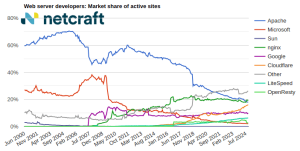 There is much mention of this elusive “Cloud Hosting” (infrastructure as a Service) but to much surprise, there is yet to be an industry accepted definition of what the Cloud actually is. Many large vendors have tried to define it, but always in the context that will help them promote their own services. Let us first clarify some of the commonalities of the Cloud. Where these “as-a-Service” industries converge, is economics.
There is much mention of this elusive “Cloud Hosting” (infrastructure as a Service) but to much surprise, there is yet to be an industry accepted definition of what the Cloud actually is. Many large vendors have tried to define it, but always in the context that will help them promote their own services. Let us first clarify some of the commonalities of the Cloud. Where these “as-a-Service” industries converge, is economics.
Component 1: Multi-Tenancy and Virtualization
Cloud Hosting is built on the back of Moore’s Law. Due to the massive increases in computing power the past 3 years (we can thank Intel’s Dual/Quadcore Processors for this) software developers and ISP’s are now able to implement incredible SOA (server-oriented-architecture) practices, namely “Multi-Tenancy.”
Multi-Tenancy represents a dramatic shift in paradigm. Software-Architecture has evolved in tandem with Computing power and can now support a single instance of software to service multiple clients (tenants). This means that one physical server can now service 100 instances of the same software or OS layer, where 5 years ago, 100 servers would be needed for the same job. The ramifications of this are mind boggling in regards to cost savings, both in datacenter real estate, power consumption, and CAPEX for hardware purchases.
These cost savings are then passed down to the end consumers. Due to this, SMB’s and individuals, are able to avoid many of the CAPEX and risk associated with setting up complex hosting configurations.
Component 2: Utility Billing
The next major component of Cloud Hosting is the concept of “pay for what you use,” better known as utility billing. As the economy deteriorates at a growing pace, the concept of paying for only the resources consumed is growing much more appealing to SME’s who are on tight budgets.
Cloud Computing resources are pooled together. Then clients have metered access to this pool of resources. They are charged per resources/consumed either on a monthly, or an hourly rate. Vendors use multitudes of variations in their billing schemas but the over-arching concept remains constant – “pay as you go.”
Component 3: Redundancy
Uptime continuity is a top priority for E-commerce businesses. Securing a service level agreement of over 99{3728c97f74b06e72d2b074bca575d40162b54b0d1060234c43f76ea5393aafc8} before the advent of affordable redundant infrastructure was not possible. It is possible for any server to go offline at any moment. Thus a fault tolerant environment must be created. This means making sure webservers, DB servers, SANs are all replicated on more than one machine with instant fail over capabilities. This means that if any particular Virtual Machine or physical server offlines, it will not effect the total uptime of the entire cloud. This is a fundamental core component of Cloud Computing. Certain firms require more extreme enterprise configurations including geographically dispersed server infrastructures but in most cases is not necessary. One could compare the cloud concept to the architecture of a P2P network relying heavily on a decentralized command and control.
Component 4: Scalability
Being locked within the confines of a Dedicated Server (or cluster thereof) limits explosive growth potential and does not protect from server flooding resulting from the “SlashDotting” effect. Cloud Hosting offers scalability from a single VM to a cluster of load-balanced servers. The level of scalability of Cloud Hosting varies vendor to vendor. For example, Rackspace Cloud allows scalability to multiple servers while other Cloud vendors such as VPS.net or other Cloud VPS providers allow clients to scale to the size of the largest free node in the cloud. Meaning that your growth, is limited to the size of one Dedicated Server. Regardless, for most webmasters – this is all the scalability they will ever need, and gives them the freedom to start from a smaller solution and scale up slowly as their traffic/needs change.




